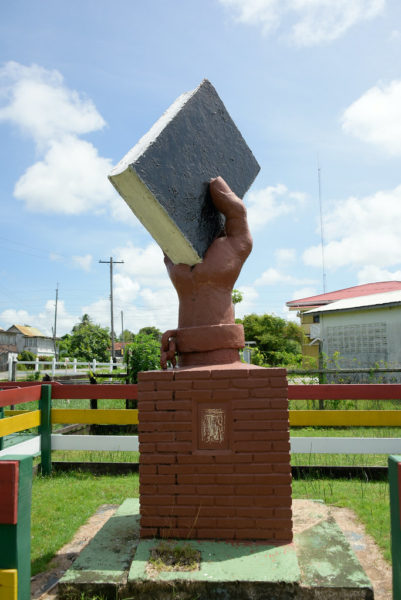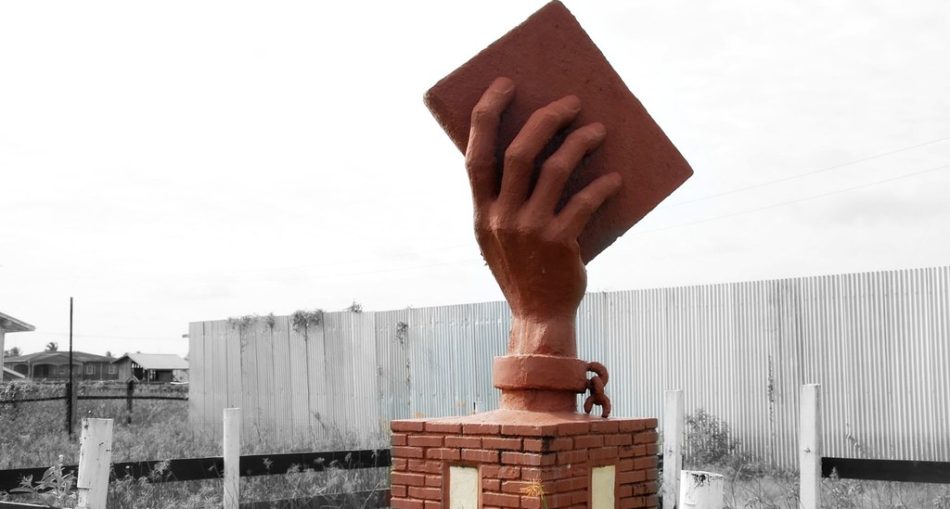Emancipation of the slaves was gained on 1st August 1838. This milestone in history has been celebrated ever since. This day celebrates the struggle and resilience of the people who were united through their trials and who have stood for their freedom despite the consequences. Several monuments have been erected to remember the African Slaves who fought and died for their freedom. Most notably the ‘Cuffy Monument’ or ‘1763 Monument’ is located in the Square of Revolution, Georgetown. Read more about the Cuffy Monument here – https://www.thingsguyana.com/coffy-the-1763-monument/ and Damon’s Monument located in Anna Regina, Region 2, Learn more about Damon’s monument by clicking here – https://www.thingsguyana.com/damons-monument-cherished-bravery/ and the monument that will be discussed today is the Emancipation Monument.
Apprenticeship
Despite the Emancipation Bill being approved in Britain on August 18th, 1833 it was until 1st August 1834 that it came into effect. The slaves were still forced back onto the plantations under an apprenticeship act which stated that slaves would work for six years in the fields and four years for house slaves. The apprenticeship agreement did not offer any better treatment for the slaves and they were still working under the same harsh conditions for a fixed number of hours which was set by their masters and were paid a small sum of money for their labour. It was until 1st August 1838 that the workers were finally set free.
If you would like to read more on the apprenticeship system please read here – https://www.thingsguyana.com/the-apprenticeship-system-1834-1838-slavery-in-disguise/
Villages That Were Established
After the end of the apprenticeship system, African slaves started to move off of plantations. Some slaves were coerced into staying on the plantations and living in their old homes but would be working under the same conditions as their old masters. African slaves who were paid overtime during their apprenticeship period would have saved money through a system called ‘Throwing box’ which allowed them to purchase land. Lands were purchased by two methods: cooperatively or individually. Most of the cotton fields were purchased through the cooperative method.
The first place to be purchased was Northbrook in 1839 which was later renamed ‘Victoria’.
Construction of The Emancipation Monument

Former President of Guyana – Desmond Hoyte. Photo Source: https://en.m.wikipedia.org/wiki/Desmond_Hoyte
One of the villages that were purchased is named Beterverwagting which is where the monument has been erected, located on Republic Drive, Beterverwagting in memory of 62 former slaves who purchased the land around 1840 for $22,000. The foundation was laid in 1995 and was completed in 1996 at the cost of $225,000. It was dedicated by President Hugh Desmond Hoyte.
Features of The Monument
- The monument consists of a broken chain attached to a hand holding up a book.
- The book is said to represent the physical book that was signed by the ex-slaves who purchased the land.
- The broken chains represent the African slaves being set free from their years of torment and finally becoming free enough to purchase their own land and grow their own plants.
- The monument as a whole represents victory, freedom, and the jollification of the community.

The Emancipation Monument. Photo Source: https://www.flickr.com/photos/arichards-gallery/33518203511
References:
- The Making of Guyana (1974) by Vere T. Daly
- Places of Interest: Guyana by National Trust of Guyana







